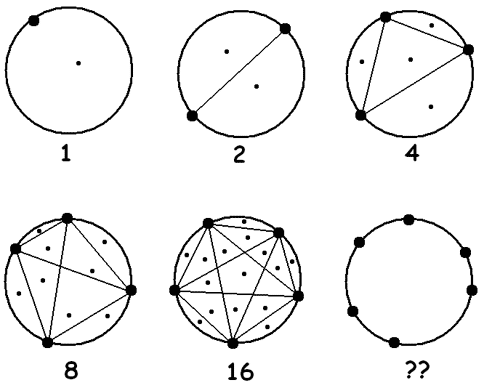12 of 25 Items .... Source: James Tanton
Problems, Questions, and Puzzles to spark discussion and argument in the maths classroom.
Navigation:
- by Course
- by Type
.... - Source: @yohakupuzzle
AFP
Akiyoshi Kitaoka
Aldo Bianchi
Alex Bellos
Alfie Kohn
Amanda Austin
Amie Albrecht
Avery Pickford
Ben Orlin
Benjamin Dickman
Bill Shillito
Bob Lochel
Bowman Dickson
Bryan Anderson
Catriona Agg
Cheesemonkeysf
Chris Lusto
Chris Luzniak
Cliff Pickover
Corbettmaths
Curmudgeon
Dan Anderson
Dan Draper
Dan Meyer
Dan Pearcy
Dave Richeson (@divbyzero
David Butler
David Marain
David Martin
David Wees
DESMOS
Don Steward
Dr. Pickle
Ed Southall
Elemental_41
Emma Bell
Erich Friedman
Fawn Nguyen
Five Triangles
Frank Noschese
Futility Closet
Gabriel Rosenberg
Grabarchuk
Grant Wiggins
Howie Hua
Illustrative Math
internet
James Pearce
James Tanton
Jeff Suzuki
Jennifer Wilson
Jo Morgan (@MathsJem)
Justin Aion
Kareem Carr
Kate Nowak
KHALID
Kiran Bacche
m4ths
Marco
Mary Bourassa
MathCirclesOz
MathedUp!
Mathshell
mathsjem
Matt Enlow
Megan Schmidt
Michael Pershan
Mike Lawler
Mr. Honner
Nathan Day
NCTM
Nob
NRICH
Numberphile
NYTimes
Pam Harris
Patrick Honner
PD
Poor Elijah
Quora
rawrdimus
Rhett Allain
Robert Kaplinsky
Sam Loyd
SAT
SKG
SolveMyMaths
StatSystem
Steve Phelps
Steve Wyborney
Steven Strogatz
Sunil Singh
T.R.Milne
Talking Numbers
Taylor Belcher
TickTockMath
TriangleMan
UKMT
UVM
Vi Hart
XKCD
. . . View This Fullsize
Ask your class if there are any Pythagorean anti-Triples: \(\dfrac{1}{a^2} + \dfrac{1}{b^2} = \dfrac{1}{c^2}\) ?
If a, b, c are integers, the question seems harder, since 1/3, 1/4, 1/5 would be (to me) obvious answers - leading to the rules for Pythagorean triples and just using their reciprocals.
.: [ALG1], [James Tanton], [Epiphany].
. . . View This Fullsize
We all recognize the Fibonacci Sequence: 1, 1, 2, 3, 5, 8, 13, 21, ...
What is the units digit of the sixty-first Fibonacci number?
Is there a pattern?
.: [ALL], [James Tanton], [Number Theory].
. . . View This Fullsize
Let's examine the function g(n):
g(n) = smallest integer such that g(n)*n! is a perfect square.
How should we go about finding if there's a pattern in that?
.: [PRE-CALC], [James Tanton], [Raw Pure Math].
. . . View This Fullsize
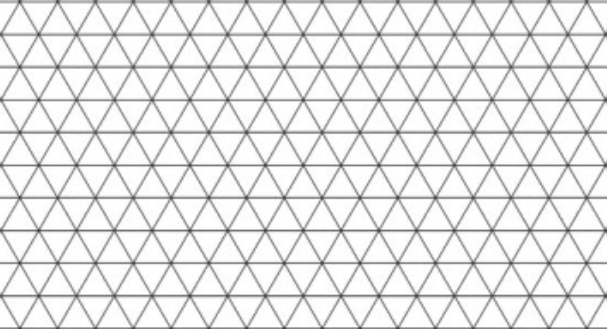
Equilateral triangles tile the plane. Is it possible to select four intersection points that are the corners of a perfect square?
.: [GEOM], [James Tanton], [Strategy].
. . . View This Fullsize
5 distinct numbers are chosen at random from {1,2,3,4,5,6,7,8,9}.
p(k) = probability their sum = k.
What are some of the ways you can find this in general?
What sum is/are the least likely?
Which sum is/are most likely?
p(15)=?
p(35)=?
.: [PROBABILTY], [James Tanton], [Raw Pure Math].
. . . View This Fullsize
The process seems to be the interesting thing here. How would you begin to work on this?
In how many ways can you write \( 2^n \) as a difference of two squares?
.: [ALG], [James Tanton], [How Many Ways?].
. . . View This Fullsize
Find two polynomials whose four points of intersection form a perfect square. (...with integer coefficients?)
What's the best way to do that?
.: [PRE-CALC], [James Tanton], [Raw Pure Math].
. . . View This Fullsize
Is it possible to choose four points on the graph of y = x² that are the vertices of a trapezoid?
A parallelogram?
An equilateral triangle?
Here's \(y = x^2\) to help you think.
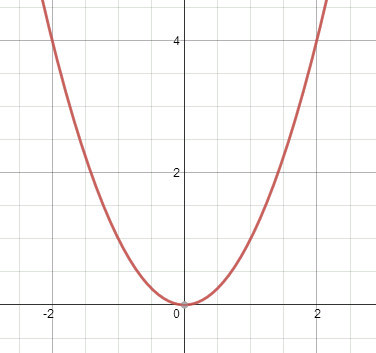
.: [PRE-CALC], [James Tanton], [Number Theory].
. . . View This Fullsize
After yesterday, I have to ask ... Is there a largest odd number that is not the sum of three composite odd numbers?
— James Tanton (@jamestanton)
.: [ALL], [James Tanton], [Number Theory].
. . . View This Fullsize
What is the largest even integer that cannot be written as the sum of two odd composite numbers?

R1
For example, 42 = 21 + 21, so it is not a candidate. 22 is a candidate because no pair of 9, 15, or 21 can equal 22.
As with many of Mr. Tanton's puzzles, there's a way to know that you are absolutely correct. Can you find the number and the explanation?
.: [ALL], [James Tanton], [New Understanding].
. . . View This Fullsize
If you've ever played with a Rubic's Cube, you know it's possible to divide a cube into 27 smaller cubes. Eight and sixty-four is pretty obvious, too.
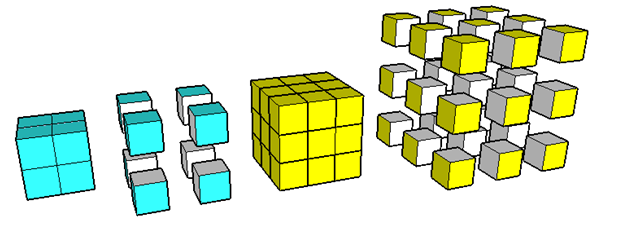
Can you show how to divide a cube into other numbers of sub-cubes, numbers that aren't perfect cubic numbers?
Like 15? or 20?
Because you don't have enough awesome in your life, I present watermelon cubes.
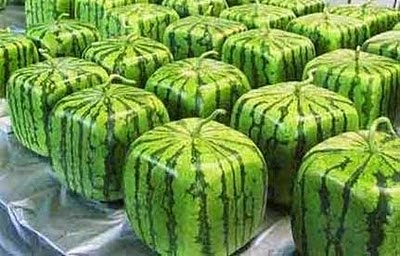
.: [ALL], [James Tanton], [Epiphany].
